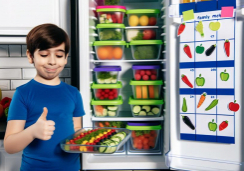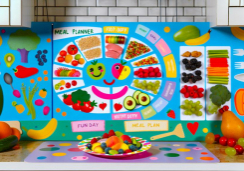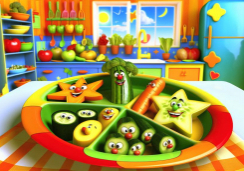What's Your Next Month's Meal Plan for Two?
Just as you're probably starting to wonder what to cook next month, you find yourself pondering the perfect meal plan for two. You're not alone in seeking a balance between variety, health, and budget. Crafting a meal plan can be a culinary adventure, one that takes into account both of your dietary preferences and the ever-important question of time.
As you consider this, you might think about how to integrate diverse cuisines while ensuring you're not wasting food. Whether you're in the mood for the robust flavors of a Baja-style chicken bowl or the delicate simplicity of a tomato basil salmon, the key lies in planning. And with the right strategies, you can maximize flavor without breaking the bank or spending all evening in the kitchen.
What's more, there are tricks to making these dishes work for you beyond a single meal, but let's not get ahead of ourselves—first, let's focus on laying the groundwork for a month's worth of meals that will keep both your palate and your schedule feeling satisfied.
Weekly Shopping Strategies
To ensure your weekly grocery shopping is both efficient and effective, start by planning your meals seven days in advance, focusing on recipes that make smart use of kitchen appliances and versatile ingredients. When you're cooking for two, it's crucial to tailor your meal plan to appropriate serving sizes to avoid excess. Opt for recipes that are designed for smaller portions or that can be easily adjusted.
By using a slow cooker or Instant Pot, you can prepare dishes in bulk and then 'make one, freeze half,' ensuring you have meals for busy days without waste. This approach not only saves time but also conserves your grocery budget. When you do buy in bulk, choose items with a long shelf life or those that freeze well. This strategy prevents spoilage and supports a nutrient-dense diet by having wholesome ingredients on hand.
In your meal planning, select ingredients that can be repurposed in various dishes throughout the week. This maximizes their usage and minimizes waste, keeping your meals fresh and varied. Online recipe resources can be invaluable in finding balanced, evidence-based dishes that fit your lifestyle, helping you maintain a diverse and healthy menu.
Diverse Cuisine Rotation
Building on the foundation of smart grocery shopping and meal planning, incorporating a Diverse Cuisine Rotation into your weekly menu introduces you to a spectrum of flavors and nutrients from various global culinary traditions. By doing so, you'll transform your Dinner Ideas, infusing your Meal Plans with excitement and variety.
- Meal Prep:
- Plan a Mexican taco night using leftover chicken for a quick and nutrient-dense meal.
- Prepare a Mediterranean pasta dish in advance, perfect for an easy meal during busy weekdays.
- Dinner Recipes:
- Experiment with Asian stir-fries, learning new cooking techniques along the way.
- Venture into Indian cuisine with a spice-rich curry that's both hearty and healthful.
A diverse cuisine rotation not only keeps your taste buds guessing but also encourages a more balanced diet. You'll be more likely to get a range of nutrients when you're not eating the same foods repeatedly. Moreover, you'll become adept at creating dishes that can accommodate a variety of ingredients, making the most of every grocery trip.
Embrace this approach, and watch how your dinners transform into a culinary adventure, brimming with colors, textures, and tastes from around the world.
Portion Control Tips
Incorporating portion control into your meal plan can significantly enhance the nutritional balance and prevents overeating by utilizing tools like smaller plates and measuring cups. As you plan your meals for the next month, keep in mind that cooking for two doesn't mean doubling a single serving recipe. Instead, use portion control tips to ensure you're not preparing more than you need.
When you're cooking dinner, opt for smaller plates; they're not just for appetizers. This visual cue can trick your mind into feeling satisfied with less food. Before you start a simple recipe, measure out your ingredients. This step isn't just about following the recipe—it's about controlling how much ends up on each plate.
Take your time to savor each meal, eating slowly and tuning into your body's hunger signals. One or two extra minutes per bite can make a big difference in recognizing when you're full.
If your next month's meal plan includes drinks, remember that they count too. Keep an eye on the size of your glasses and limit portions of sugary or alcoholic beverages to keep your meal nutrient-dense.
Adapting for Dietary Preferences
While portion control is a key aspect of meal planning, it's equally important to consider each person's dietary preferences and restrictions, whether that means exploring vegetarian options or finding delicious gluten-free recipes. As you're used to cooking for two, adapting for dietary preferences can be a seamless part of the process if you embrace the role of a flexible recipe creator.
- MAKE MEALS adaptable:
- Vegetarian: Swap out meat in favor of plant-based proteins like beans or lentils.
- Gluten-Free: Use alternative flours or grains, such as almond flour or quinoa.
Keep your meals diverse and nutrient-dense by including a variety of vegetables, grains, and proteins. Try a sweet potato-based dish—it's quick and easy, naturally gluten-free, and can be dressed up or down to suit your tastes.
By cooking instead of opting for pre-packaged meals, you maintain control over the ingredients, ensuring that each meal meets your dietary needs.
Communication is key. Make sure to discuss preferences and find common ground. One meal can be a shared experience that satisfies both of you, even if it's tweaked slightly for one person.
Online platforms are a treasure trove for recipe inspiration—use them to your advantage.
Efficient Cooking Techniques
Mastering efficient cooking techniques ensures that you make the most of your time in the kitchen, allowing for nutritious meals without the stress of last-minute preparation. To make your meal planning much easier, leverage the convenience of batch cooking. This method lets you cook large quantities at once and freeze portions for future use. For example, make a big batch of grilled chicken on the weekend, and you've got a versatile protein ready for various meals throughout the week.
Make sure to utilize kitchen appliances like the Instant Pot to your advantage. It can drastically cut down cooking time while ensuring you're not sacrificing quality. Chicken, for instance, can be cooked quickly and easily in an Instant Pot, leaving it tender and flavorful. This appliance is perfect for cooking meals that would usually take hours in a fraction of the time.
Frequently Asked Questions
How Do I Write a Monthly Meal Plan?
To write a monthly meal plan, prioritize recipe variety, using budget-friendly ingredients, and seasonal produce. Organize your kitchen, adapt for dietary restrictions, manage leftovers, and level your cooking skills with essential shopping lists and planning tools.
How Do You Meal Prep for Two People for the Week?
You'll master meal prep for two with portion management, recipe rotation, and strategic shopping. Stock freezer staples, plan balanced diets, and use time-saving hacks while considering nutrition and transforming leftovers with seasonal selections.
How Do I Plan a Month's Worth of Meals?
To plan a month's meals, assess your grocery inventory and dietary preferences. Include seasonal produce, rotate recipes, and consider your budget. Use leftover strategies, maintain nutritional balance, and introduce flexible options with theme nights.
What Is the 321 Meal Plan?
The 321 Meal Plan boosts creative flexibility, portion control, and ingredient rotation for optimal time management. It's a budgeting strategy ensuring nutritional balance, efficient grocery shopping, leftover utilization, and flavor variety in your meals.
Conclusion
You've got your next month's meals sorted with flavors from across the globe. Remember to shop smart, sticking to your list and buying in-season produce. Rotate cuisines to keep things exciting and manage portions to avoid waste.
Adapt recipes to fit any dietary needs, and employ efficient cooking methods to save time. This balanced, nutrient-rich plan not just satisfies taste buds but also supports a healthy lifestyle.
Enjoy the culinary journey ahead!










